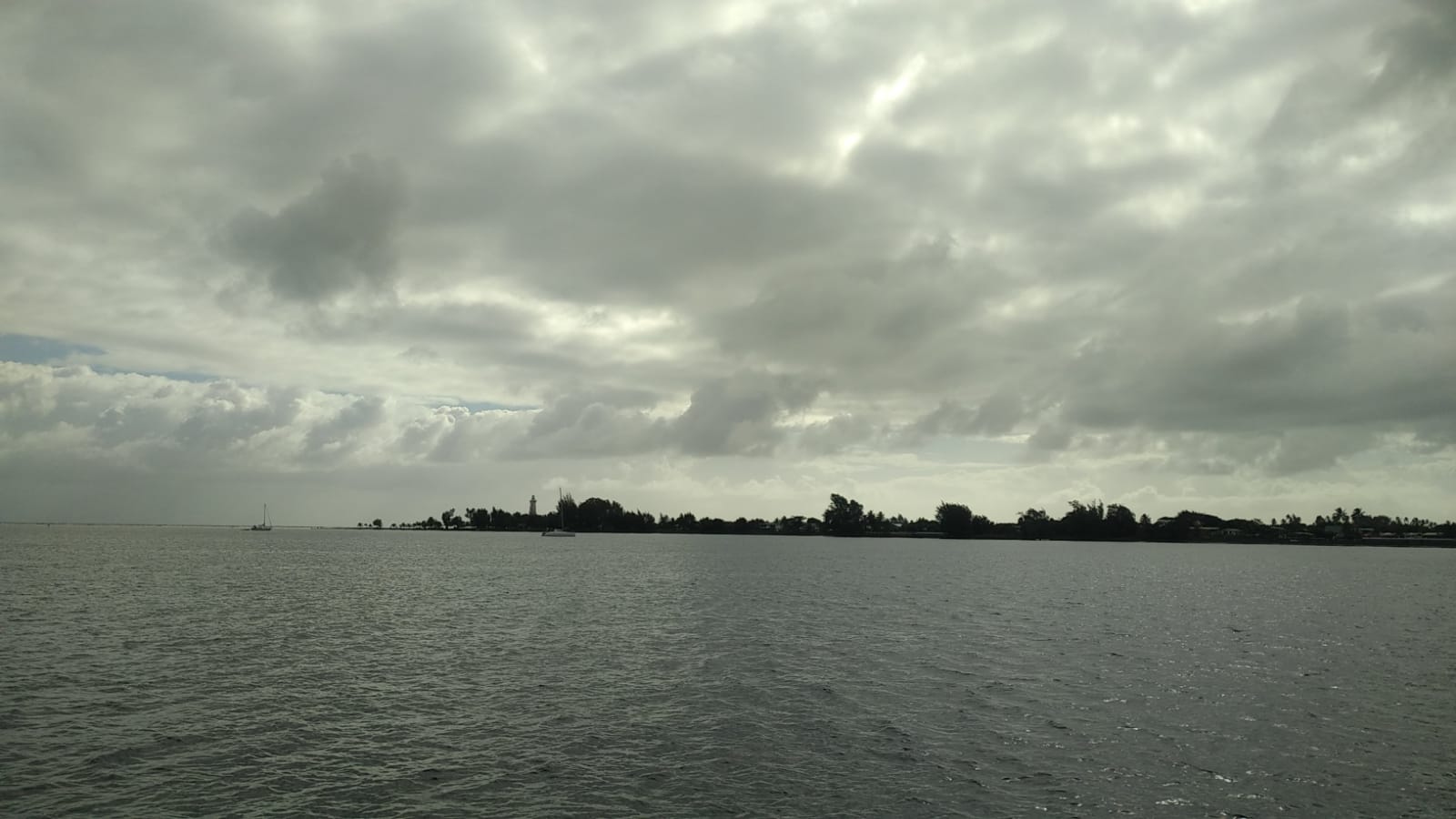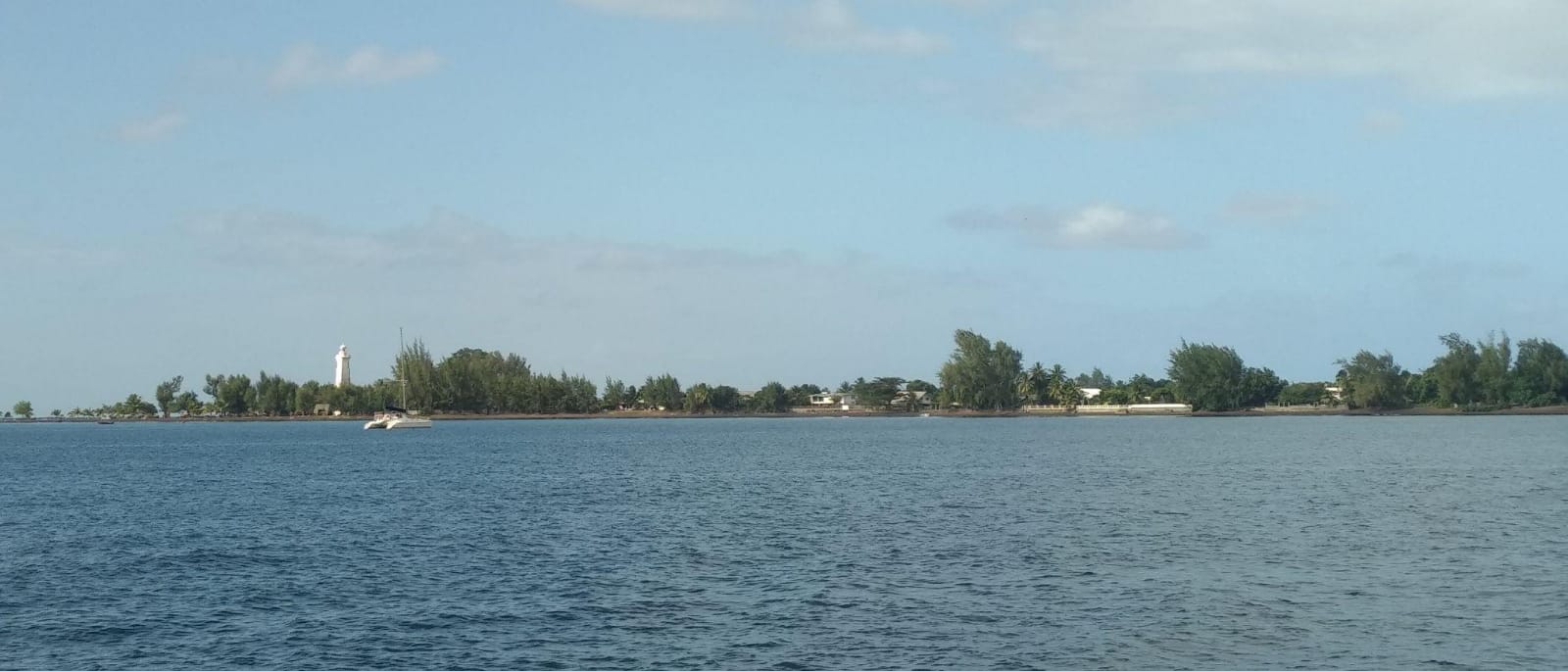It was an easy sail from Hatiheu back to Taioae. An essential stop to swap English reading books at Kevins, to stock up at the supermarkets and buy fresh vegetables from the market. All done. Time to leave Nuku Hiva. We look forward to sail to the next island Ua Pou.
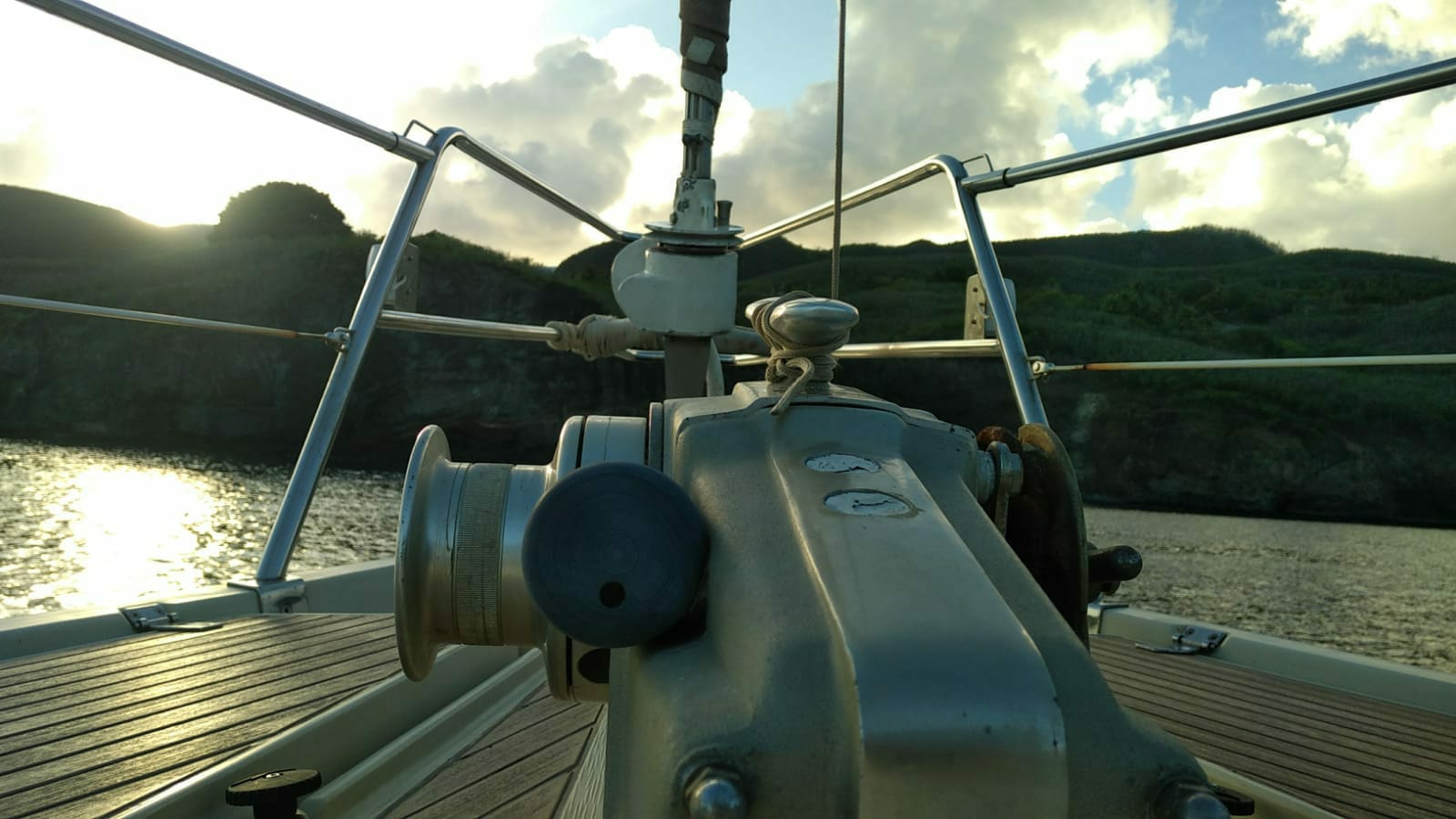
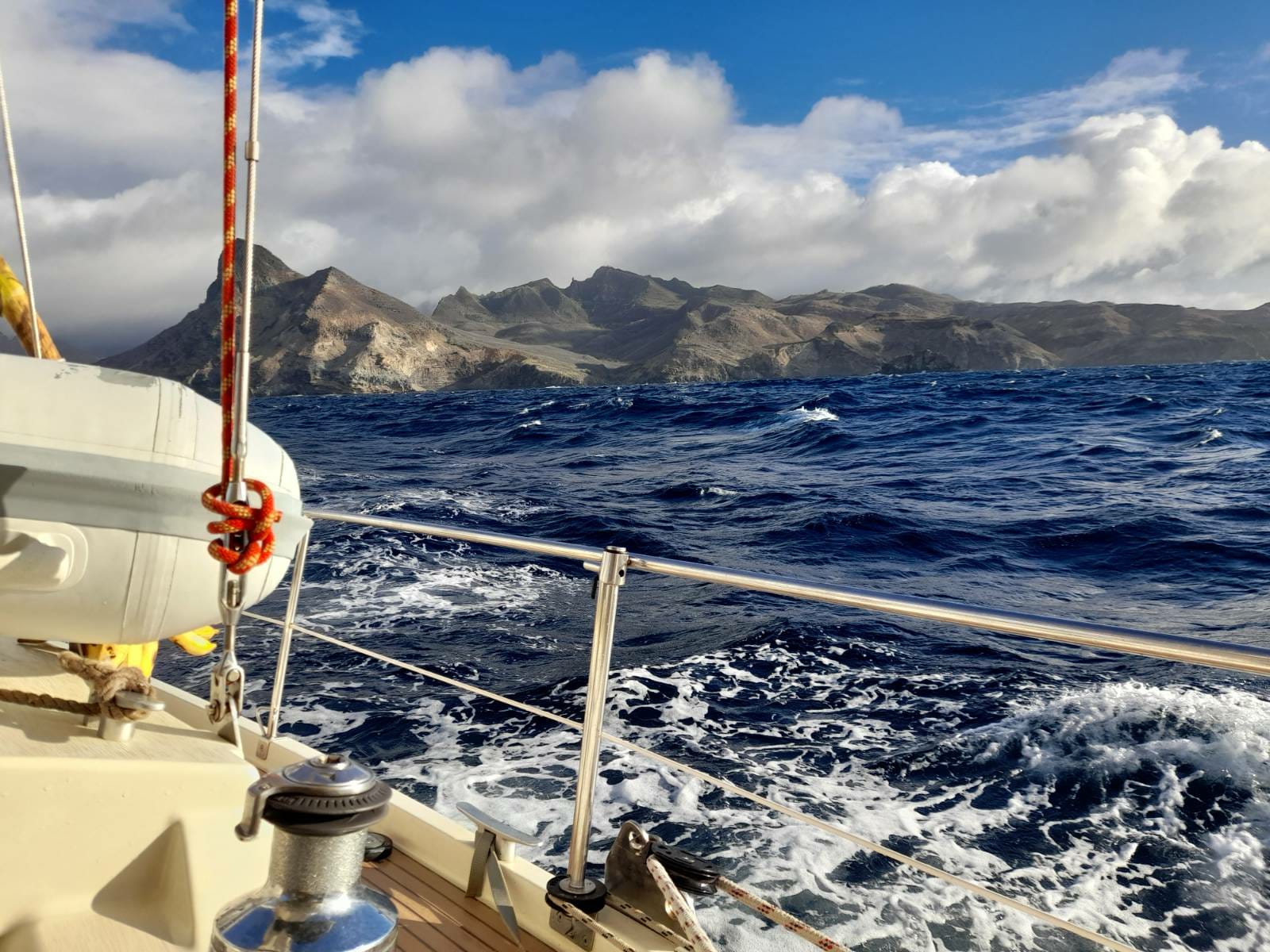
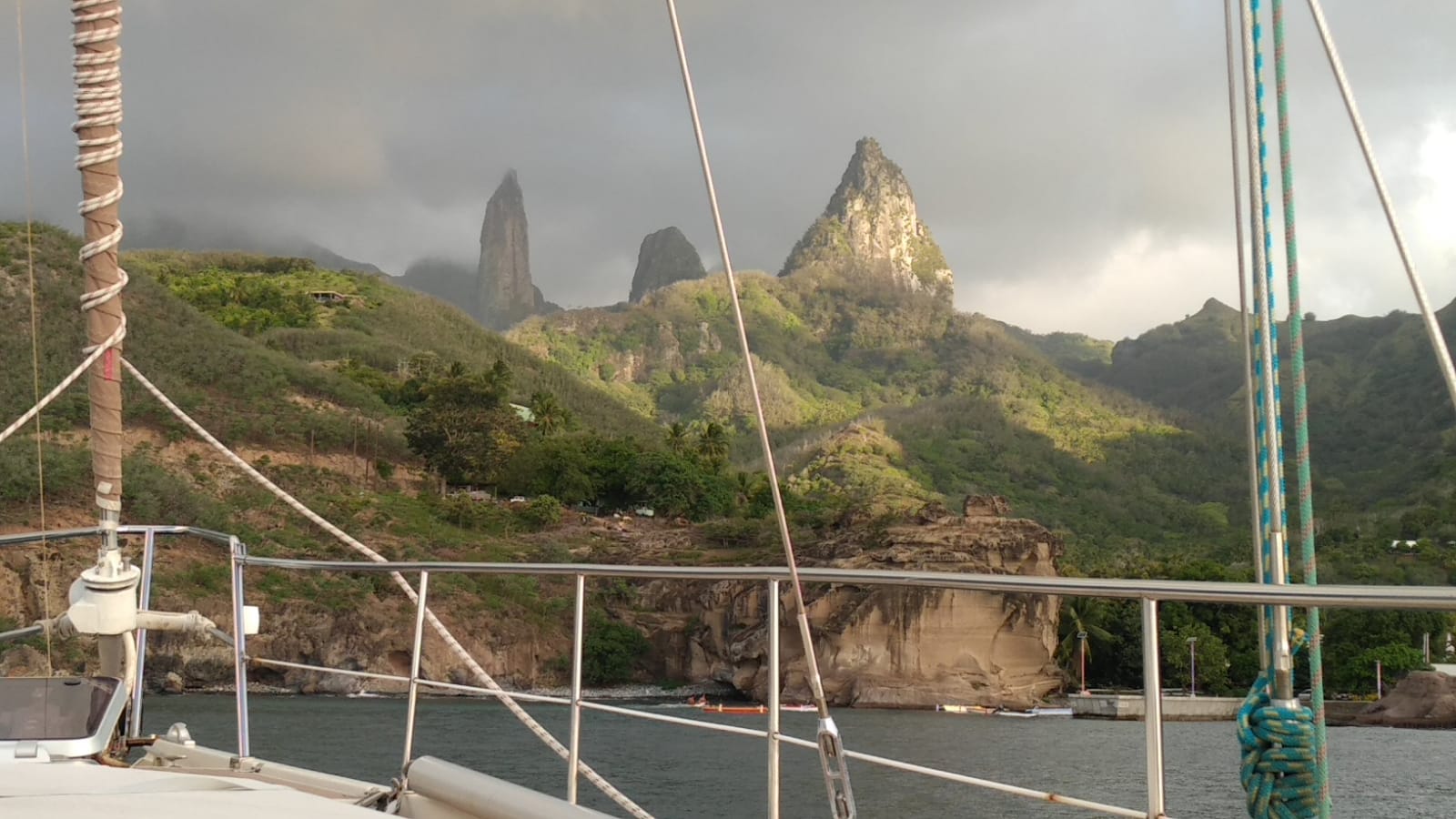
But yesterday was drizzle and grey. It was a good day for an excursion, so we hitch hiked to Hakahau; we needed to go to a Post Office to get credit and for some provisions you can’t get here, Like eggs

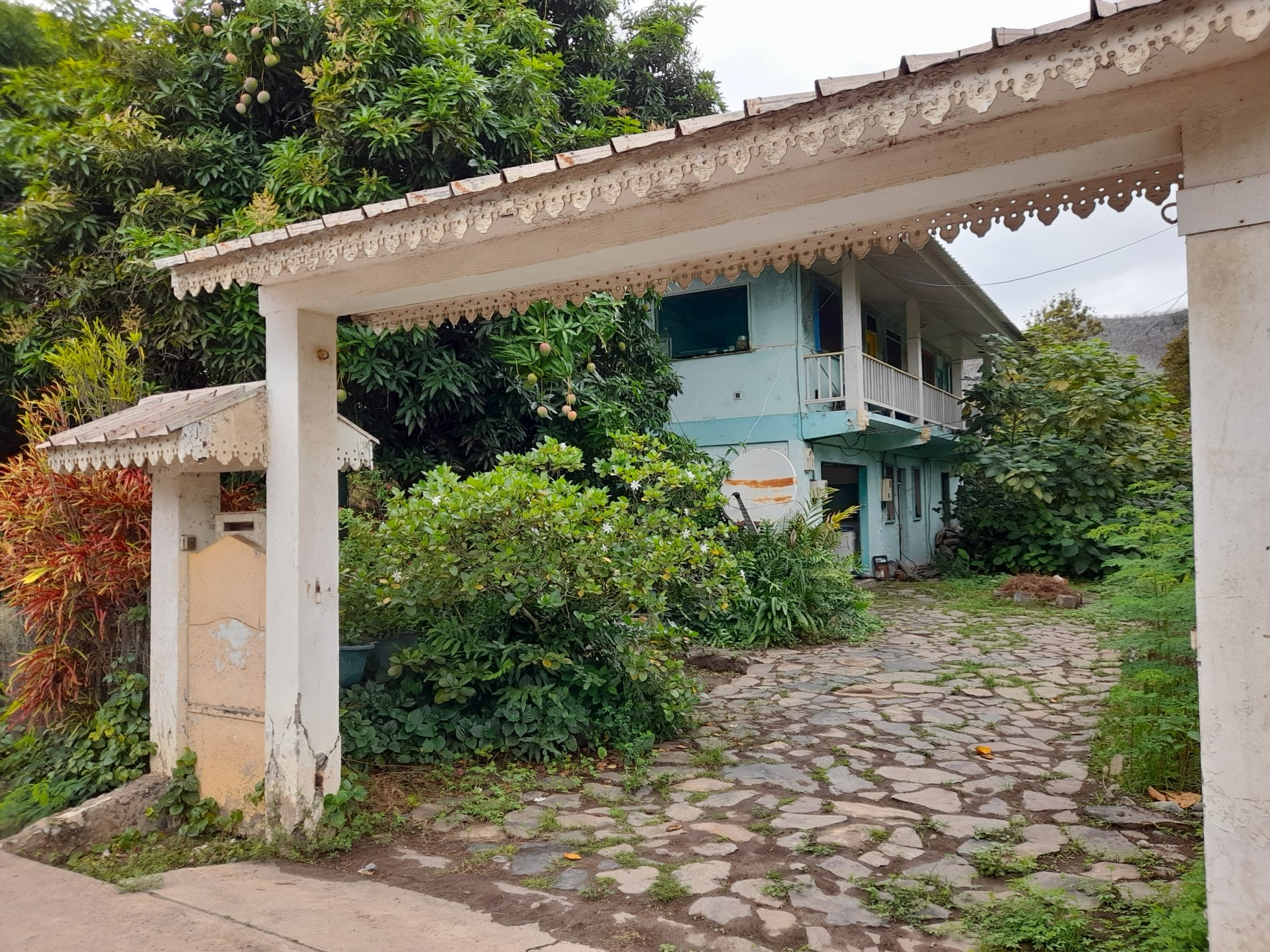
As we progress away from habitations on the coast road there is an emaciated tethered colt grazing the verge, it is much dryer here than previous islands . There is fire damage too, the undergrowth of young green acacia emerging through brittle pale and charcoaled stalks . What with goats, wind, and sunshine the trees do not prosper. We enjoy the walk in the grey early morning with the sea to our left .
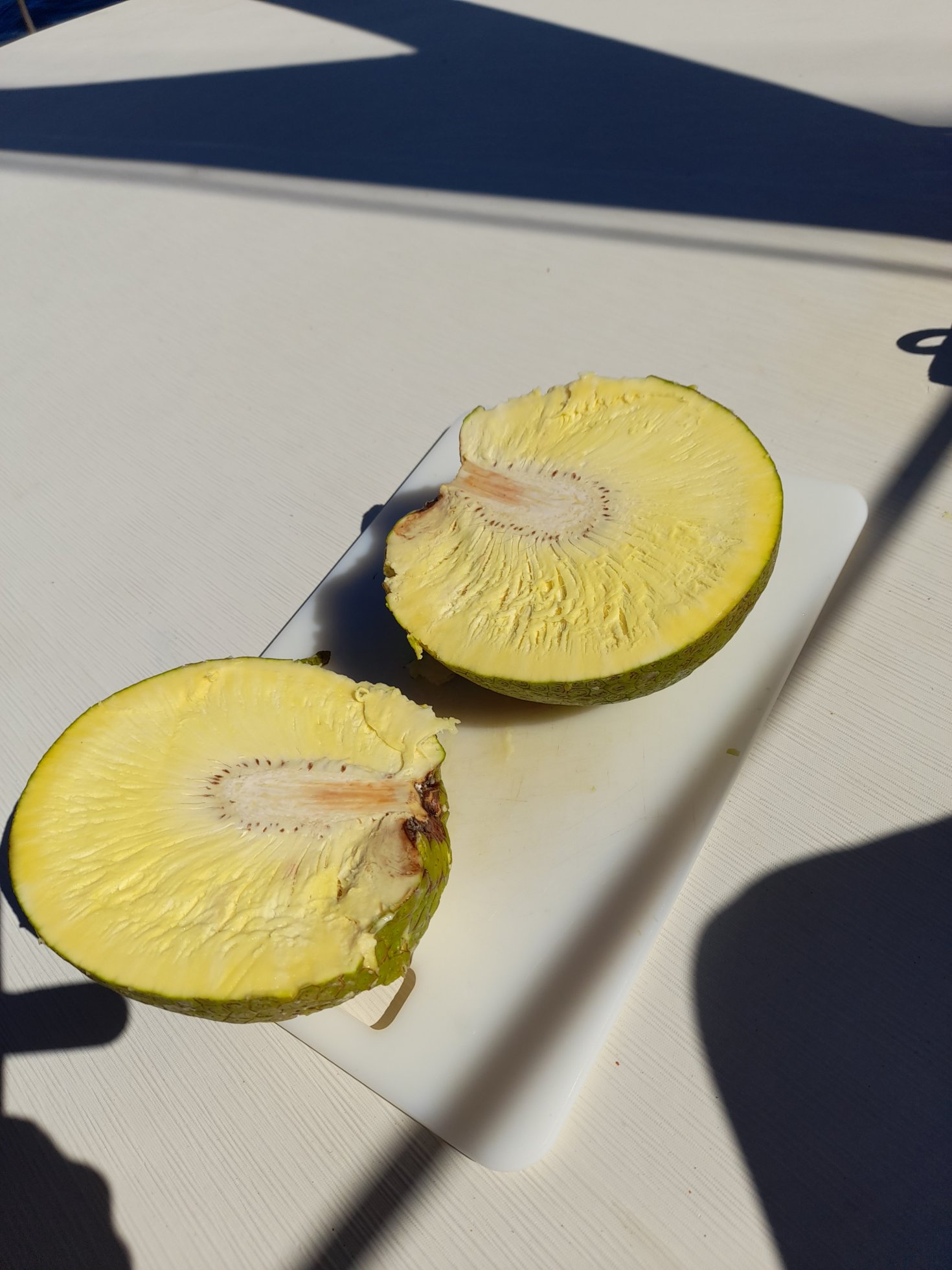
After twenty minutes a car (the first) stops to my demanding thumb. She is a school teacher. They go back to school on 15th Aug after their two month holiday. We start chatting in French but then we discover she did her Erasmus year in South England and she loves to practice her English. This nice lady, a mother, grandmother to be in October and primary school teacher brought us all the way to Hakahau and she said: near the post office there are vegetables for sale, on the Friday only.
From above, a hundred faded pastel roofs are scattered haphazardly over the wide valley. This is a small town. There are two grocery stores, a few administrative buildings and an artisanal area. Three boats anchor behind the breakwater and a magnificent tiki statue stands outside the Mairie offices. It is all very pleasant.
Now this gives Stefan something to chuckle about, days later………. We are sat on the small wall outside the Post Office waiting in the queue. Often the amount of people allowed to enter at a time is limited, as if covid is still a problem. We are approached by a middle aged lady, casually dressed, bra~less in a teashirt, like me, I always observe these things, looking for kindred spirits. She smells like she just put her fag out. Her first phrase is something like “My, you two are thin!”. This is so forward, for a fleeting moment I wonder for her mental health which I quickly let go of. She reaches to my t~shirt briefly as if she considers giving me a squeeze so I point out that Stefan really is thin which turns her attention to him, brazenly she rubs his ribs with one hand while the other lifts his t~shirt. He laughs and encourages her, showing off his bare skinny protruding lower ribs. He tells her, enjoying the exchange, that his father also had this shape, an unusually sticking out lower ribcage. She spends more time than you would expect giving him a little caress. We laughed about this afterwards amazed at her cheek. I say that after a certain amount of years some women get this god given right to fondle anybody anywhere. It’s a familiarity that they earn with time. Maybe here on the islands it happens more than in our culture we don t know.
She later offered us a lift but we were going different directions. The side of her four wheel drive advertising Dora’s Pension so we know where to stay!
As we arrived at the eatery the rain bucketed down turning the ground outside the open building into orange puddles. We watch the water drive off the corner of the roof just missing the intricately carved support, pummelling the ground below.

The work the people do here with the natural material is really quality. This is one of the areas the islanders excell in . Using bone, shell, wood, stone, seeds, carving ear rings, pendants, bracelets, hairpieces and little statues.
Rich cream of bone, dark browns of ancient wood and scarlet seeds, the colors of Marquesan Nature.
We are not good tourists I m afraid. We buy nothing today.
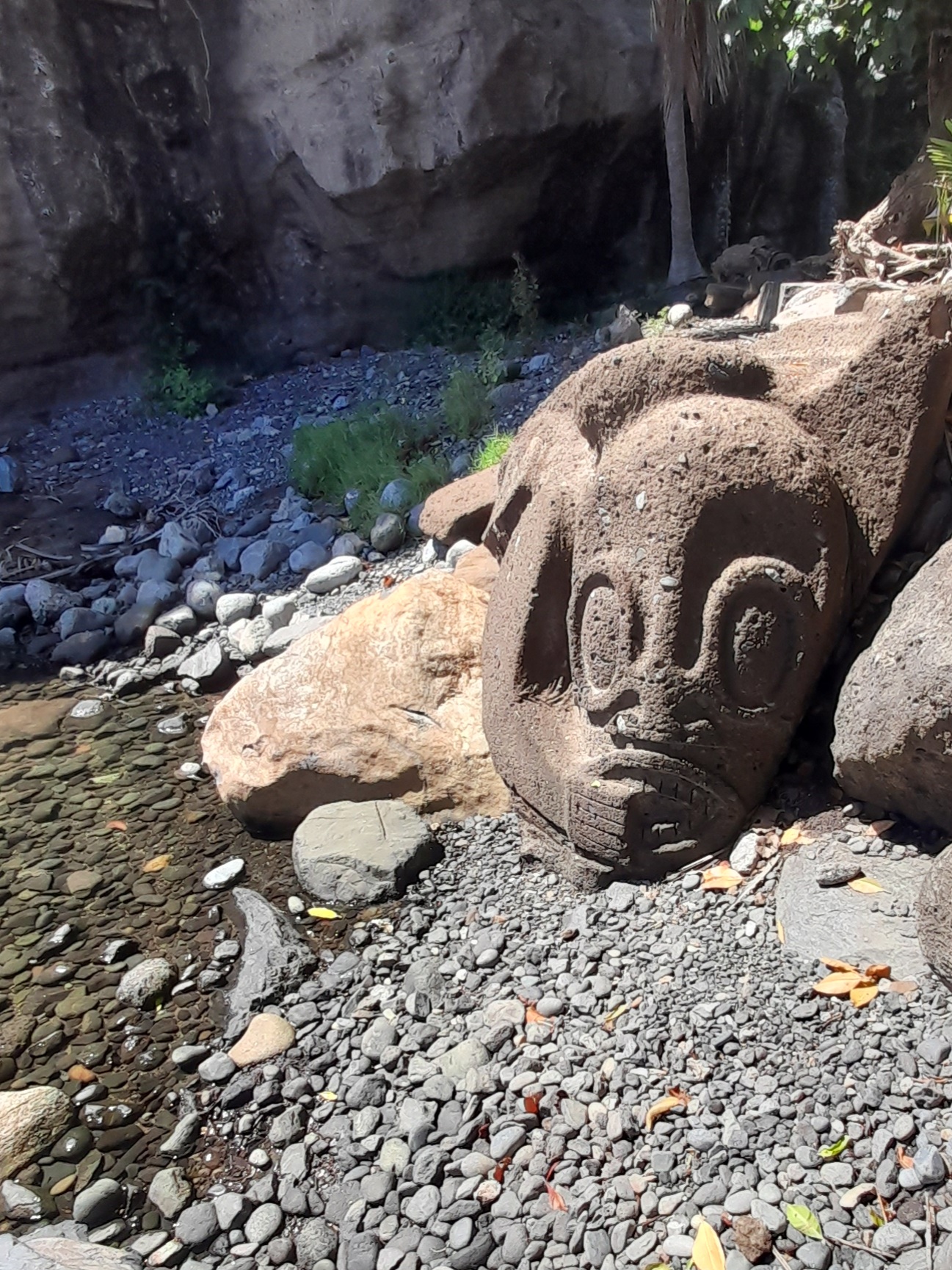
It’s time to go home to Malaka Queen. We walk happily the first kilometre until, responding again to my demanding thumb, an untalkative working man picks us up . He is collecting some colleagues fifteen miles on where he drops us off. He is not talkative, we are super grateful for the lift his open windows in the front flapping black bin liners in the breeze . He drives slowly and carefull through the rain around the potholes. We pass the airport runway. He doesn’t speak much, it is a peaceful lift. Gratitude to the people who live on Ua Pou for their hospitality.

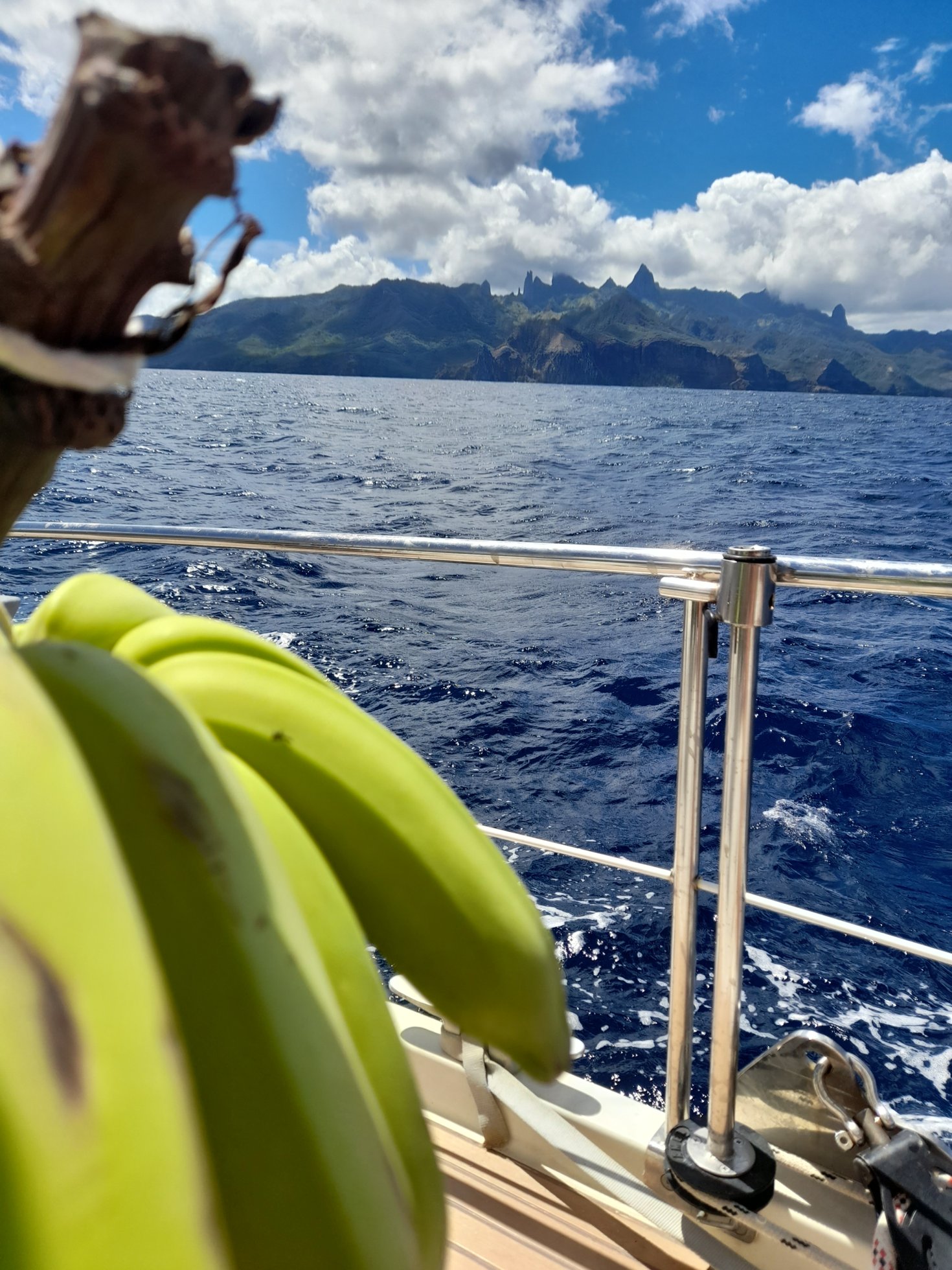

The Tuamotus Archipelago in the Pacific Ocean consists of 80 sunken volcanoes over an area of about 1000 square miles. Individually they are known as atolls. While the volcanoes sank coral reef formed over millions of years creating a lagoon with a wall of protection, like a fortress. Inside it is calm and clear, ideal for snorkeling, diving, anchoring, supping etc. Above sea-level coconut palms and grass are the only thing that grows, usually. The atolls vary in size from a few hundred metres across to several miles long and wide. The larger ones have villages with airports. The smaller are uninhabited. All have in common no hills or agriculture. To be able to access these fortresses one has to negotiate a narrow pass and that requires alot of care to enter by boat.
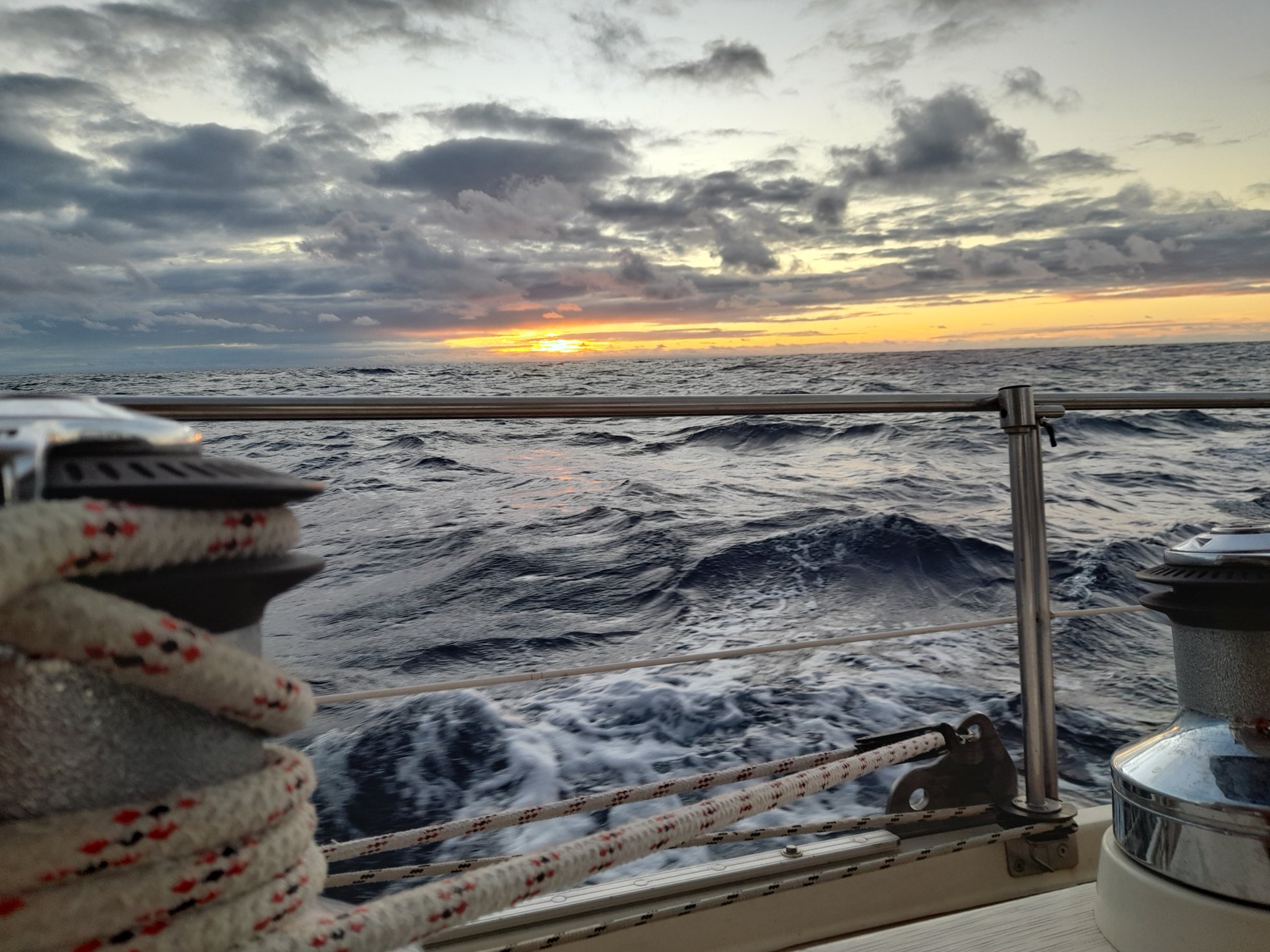
The first three days and nights of our passage from Ua Pou passed happily enough. One day was idyllic, we even played Chinese chequers in the cockpit. Even though we were sailing close reach, that’s with the wind close to head on, it was blue, like an aquafresh advert, smooth, steady, our spirits soared. Making average of 6 knots the whole time on reefed sails. The first night was tough at the beginning, we lost the mizzen, the third sail. The knot on the end of the outhaul had loosened in a gust. One big bang later and the sail was ripped. We have two other sails to sail with luckily enough, a ketch has three sails.
Before the third night started, Stefan had made a plan to get to Tahanea Pass at slack tide in daylight hours but we are real greenies, first time beginners.
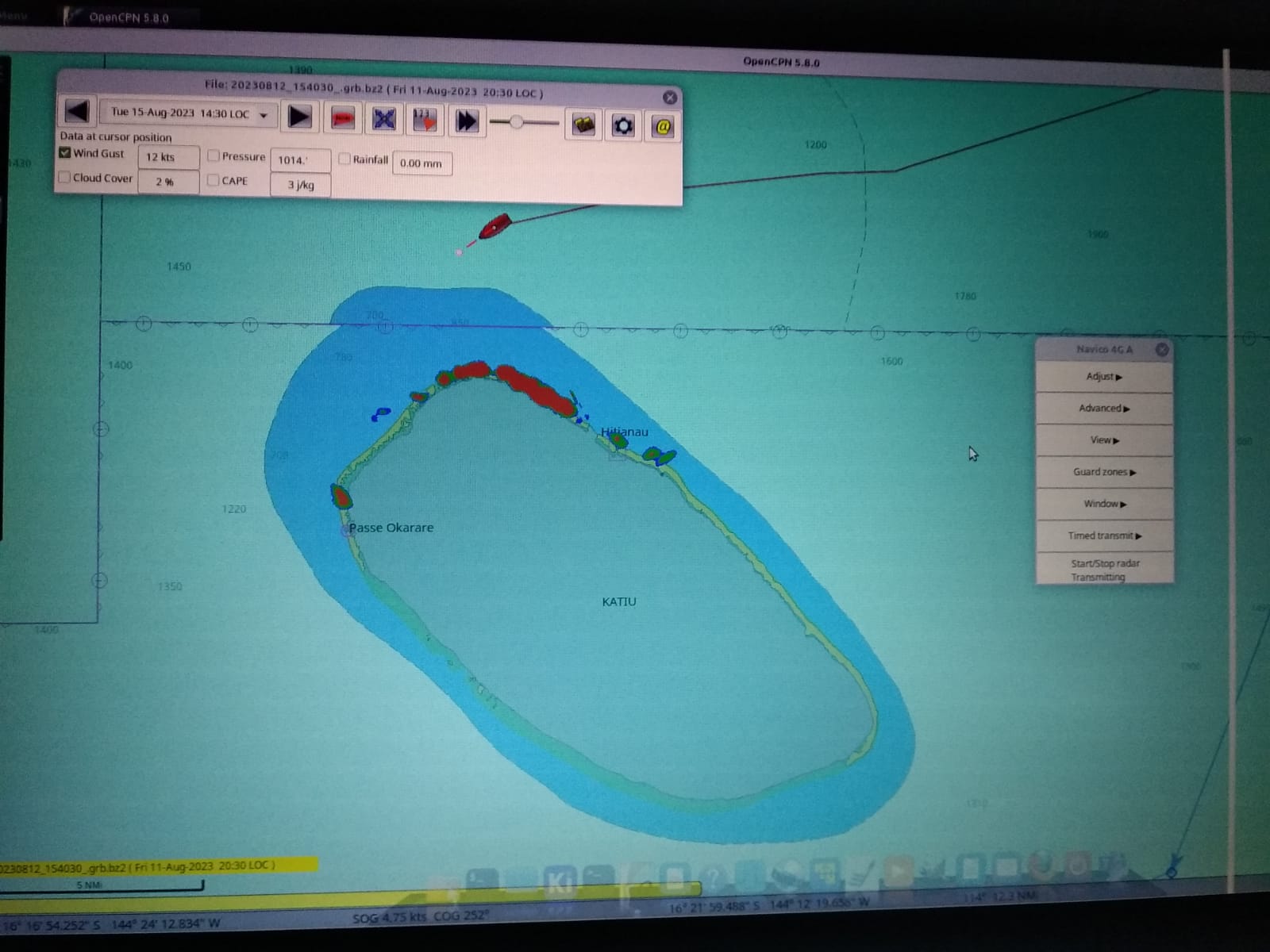

Plan B, different atoll. In order to put plan B into action we needed to go very slowly over the next 40 miles to arrive in daylight at slack tide for our next chosen atoll as there is nowhere to wait in the meantime (no anchorages, only thousands of metres deep sea). We need to loose about 20 hours in fact! For forty miles in twenty hours, to be precise, our boat speed should be two seamiles per hour which is two knots . We tried sailing ‘under bare poles’ which means the sails are rolled up and we travel with the wind and current behind us. We go 3 to 4 knots, still too fast but at least not the 7 knots of speed which we would have achieved even with tiny reefed sails. Yes it’s quite windy! How to slow down more?
In the end, what we actually decided to do that night is zig zag away and back, back and forth, in order to try to delay our arrival to the right time for our next atoll. This time, pass Tumakohua, Fakarava! The plan hinges on the weather becoming much calmer by the time we approach Pass Tumakohua but after a while of bombing backwards and forwards to kill time in the pitch black of the new moon we realise our weather predictions are very wrong.
We are now close to the NW coast of Atoll Faaite where we get good 4g for an updated weather forecast. The weather forecast is clear. The wind will not drop in the next 4 to 5 days. 25 knots. Disappointed, because we tried quite hard, we are not visiting any atolls this time, we change our plans again and sail straight to Tahiti. Tahiti is two days and nights sail away approx 240 nm. Down wind. No problemo.
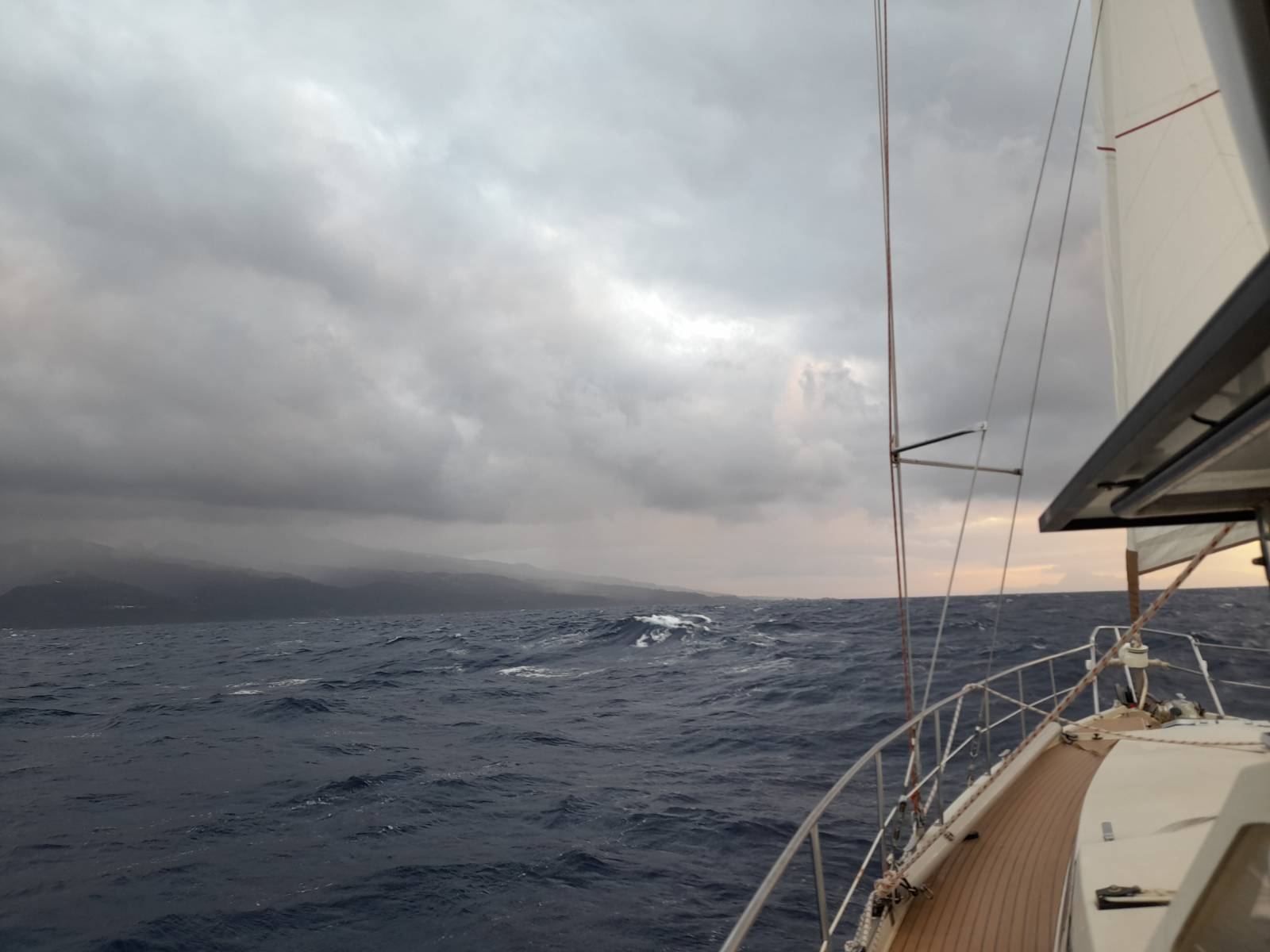

I stand at the bow looking out into the dark trying to spot unlit boats and hazards. We anchor and only then we look behind us. There is a boat 50 meters away behind us and they are flashing a light now. Indeed they were anchored there with no lights on when we arrived. That was a bit uncomfortable for me but a good lesson. All part of the cruising life. Captain was very calm ( I would have seen them in time? if they had have been on our direct route)
Since we where too close for comfort we lifted the anchor again found another spot. Plenty of space at Pointe Venus. This place is great except there is no handy place to get to land so we plan to move soon.
